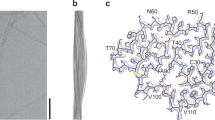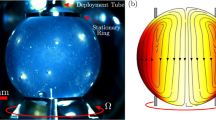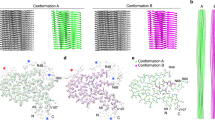Abstract
Revealing the structure and aggregation mechanism of amyloid fibrils is essential for the treatment of over 20 diseases related to protein misfolding. Coherent two dimensional (2D) infrared spectroscopy is a novel tool that provides a wealth of new insight into the structure and dynamics of biomolecular systems. Recently developed ultrafast laser sources are extending multidimensional spectroscopy into the ultraviolet (UV), and this opens up new opportunities for probing fibrils. In a simulation study, we show that 2DUV spectra of the backbone of a 32-residue &x03B2;-amyloid (A&x03B2;(9-40)) fibril associated with Alzheimer's disease, and two intermediate prefibrillar structures carry characteristic signatures of fibril size and geometry that could be used to monitor its formation kinetics. The dominant features of the &x03B2;-amyloid fibril spectra are determined by intramolecular interactions within a single A&x03B2;(9-40), while intermolecular interactions at the "external interface" have clear signatures in the fine details of these signals.
Similar content being viewed by others
Article PDF
Author information
Authors and Affiliations
Rights and permissions
About this article
Cite this article
Jiang, J., Abramavicius, D., Falvo, C. et al. Simulation of Two Dimensional Ultraviolet (2DUV) Spectroscopy of Amyloid Fibrils. Nat Prec (2010). https://doi.org/10.1038/npre.2010.4369.1
Received:
Accepted:
Published:
DOI: https://doi.org/10.1038/npre.2010.4369.1



